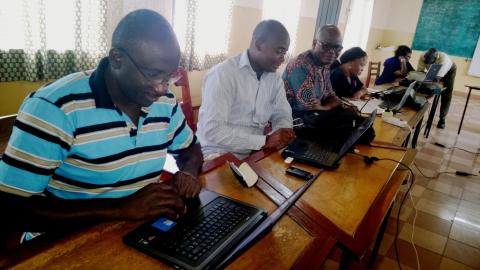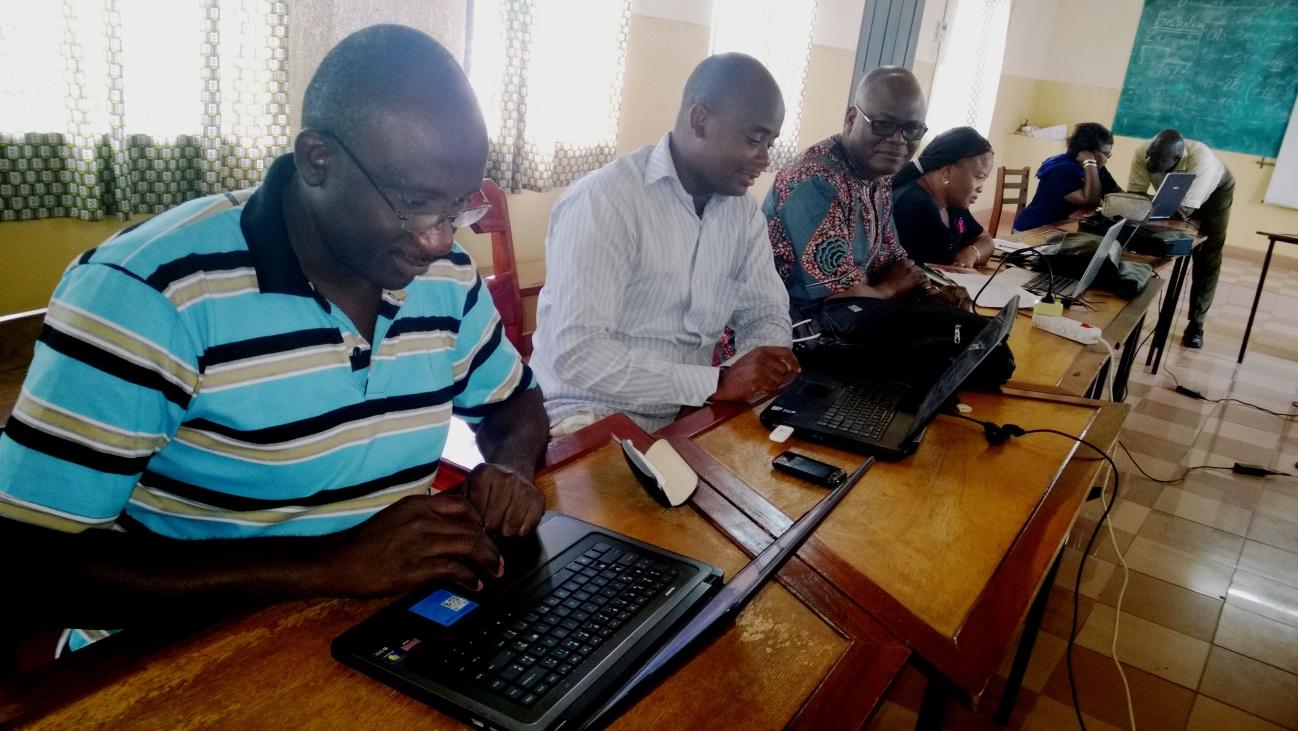
In the midst of this year’s intensified global discussions and debate about the new sustainable development goals and financing for development frameworks, one question seems to be at the forefront of everyone’s mind: How do we demonstrate results or the “value for money” of international aid? In other words: how do we prove that aid is working?
This is particularly relevant when it comes to sectors such as health, where results and impact can often only be measured over longer periods of time.
During a recent policy dialogue orientation meeting in Brazzaville, organized by the World Health Organization (WHO) under the EU-LUX-WHO Partnership on Universal Health Coverage (UHC), partner country Togo demonstrated that showing results of health systems strengthening efforts is not “mission impossible.”
Since its inception in 2011, the EU-WHO-LUX Partnership initiative has aimed at providing support to health systems and plans for universal health access in 19 developing countries. With its current phase II coming to an end in December, the program’s activities and costs inevitably need to be assessed against results and impact achieved at country level. Several WHO country offices were therefore invited, during a March 2015 WHO meeting in Brazzaville, to present their experiences with the UHC partnership within their respective countries.
Among them was Togo, which received wide recognition from meeting participants for providing an illustrative and well-structured results chain presentation on how the UHC partnership had contributed to improving vaccination coverage and access to essential medicines rates in two pilot intervention district (one urban: Golf District; one rural: Kloto District) selected by the country’s Ministry of Health.
Nevertheless, Togo had to “earn” its’ audience’s appreciation first: “How do you measure ‘improved leadership’?” one participant asked, challenging Togo’s representatives on the findings in their presentation. Taking up the challenge, WHO country representatives explained, step-by-step, how a number of participatory approaches, notably proximity coaching, policy dialogue and coordination, were used to strengthen decentralized health planning and implementation within the two selected districts.
Proximity coaching for district health management teams (ECD)
District health management teams have received personalized guidance from WHO in areas considered essential for the decentralization of decision-making in the health sector, including:
– Strengthening of ECD management and planning capacities through a program of methodological support for the development of district operational action plans (PAO) with a focus on results and the implementation of high-impact interventions; and support for improving district-level coordination and monitoring;
– The institutionalization of performance monitoring based on the participatory analysis at community level of health system bottlenecks (methodological and financial support, facilitation of the process);
-Support and advice for carrying out the Service Availability and Readiness Assessment (SARA) in the two pilot districts: ECD training on the use of the SARA tool adapted to the national context; capacity-building on data analysis;
-Support and advice for the establishment of a community-based system for registering births and deaths of mothers as well as children under 5 (experience Kloto district);
– The introduction of catalytic funds dedicated to the better management of stocks of essential and generic drugs;
– The facilitation of the establishment of a framework for collaboration / partnership with the private care sector in the Gulf District.
Policy dialogue, coordination at the decentralized level
Coaching activities were complemented by ongoing support for strengthening policy dialogue and coordination capacities at the district level, including:
-The implementation of a mission to assess the status of the sector coordination mechanisms and policy dialogue potentialities at district level;
-Training of actors at central and decentralized levels on how to conduct a multi-stakeholder dialogue (provided by Collective Leadership Institute, a specialized German institution, with funding from the UHC partnership);
-Support for the development of inter-ministerial decrees for the establishment of a coordination and inclusive sector policy dialogue framework at the decentralized level (prefectural and regional health and HIV committees) and for the revitalization of management committees (COGES) of the district health formations as part of the community participation strengthening process;
– Support given for the operationalization of “prefectural health / HIV committees” through sensitization meetings with stakeholders as well as sessions on the review and validation of the annual District Operational Action Plan, involving all stakeholders under the leadership of EDC.
– The systematization of monthly coordination meetings of EDC and representatives from the district health formations.
Concrete results – the “added value” of aid
When it comes to showing health systems strengthening (HSS) results, it might be tempting to stay at the output – or process- level. It is, for example, quite clear that the UHC partnership activities have led to the following outputs in the selected pilot districts in Togo:
1) Innovative approach to operationalizing the National Health Development Plan (PNDS) through PAO district plans involving a broad range of stakeholders;
2) Improved ECD leadership due to the strengthening of district planning, management, coordination and monitoring capacities;
3) Improved operational service-delivery capacities through the availability of Essential and Generic Drugs (MEG);
4) Improved district-level cash flow through an increase in own resources (cost recovery funds) and their use for the financing of some high impact interventions, such as advanced immunization strategies.
In addition, efforts have been made by the WHO to show that preliminary results go considerably beyond the output level: A first assessment undertaken to monitor the impact of UHC partnership activities on key performance indicators over the last three years showed that significant progress had been made in advancing the operational capacity and utilization of health services in target districts, in comparison with neighbouring districts. Notably, medical consultation user, vaccination coverage and access to essential medicines rates had increased by an average of 10 points in both districts between 2012 and 2014.
This progress can be attributed in large part to the support provided by WHO under the UHC partnership, in particular to proximity coaching activities for district management teams and the facilitation of an inclusive policy dialogue at operational level.
Indeed, WHO’s support for enhancing the availability of MEG at some health facilities and their management, for example, led to an increase in cash flow for the two targeted districts. New resources have been used to locally fund some high impact interventions such as advanced vaccination strategies – rarely implemented in other districts since the withdrawal of GAVI funding. This, in turn, helped to maintain or expand immunization coverage levels in the two pilot districts.
The Future: Are the results scalable?
The next challenge is to capitalize on the lessons learned from this approach to ensure results are scalable at regional and national level. In its roadmap for 2015, the UHC program of activities foresees to replicate the approach within the entire region (central region with four districts) in order to improve the performance of the health system in a comprehensive manner by linking all different levels (operational, intermediate, strategic).
It is worth noting that in Togo, the UHC partnership is working at two levels – the national and district level – which is important for the harmonization and coordination, as well as the scaling up of activities.
Accordingly, the Ministry of Health (MoH) of Togo had already agreed to replicate the approach tested in two pilot districts in six other health districts in the area – initially with the support of the French Fund Muskoka, although these resources have finally been redirected to Ebola prevention efforts. Notwithstanding, the MoH’s declared intention in itself is recognition of the value of UHC partnership activities.
The overall lesson learned seems clear: Ensuring that HSS support has a valuable and lasting impact is indeed possible if all relevant stakeholders and levels of decision-making work together in an effective and coordinated manner.
